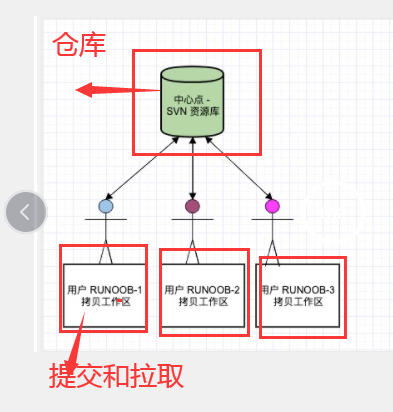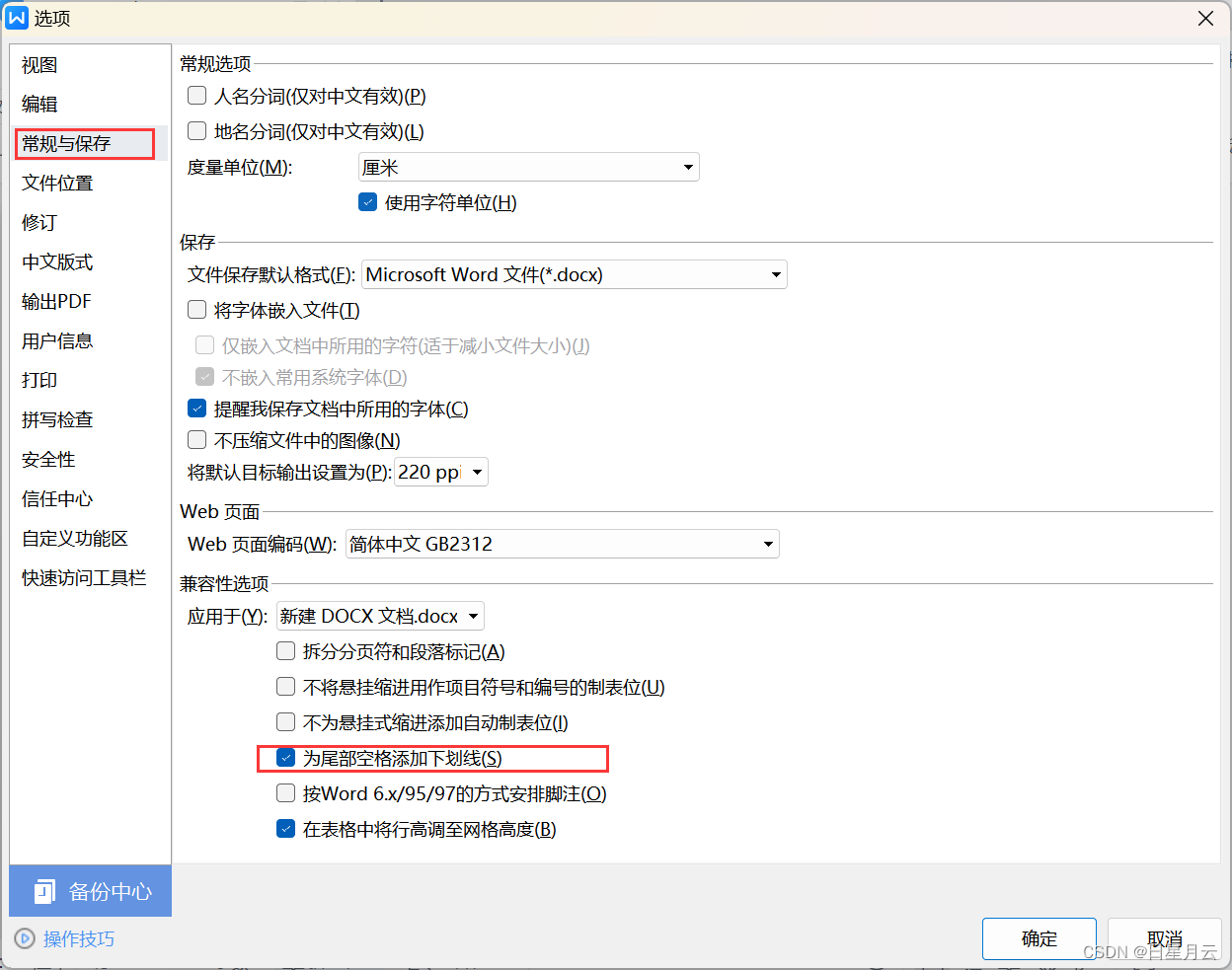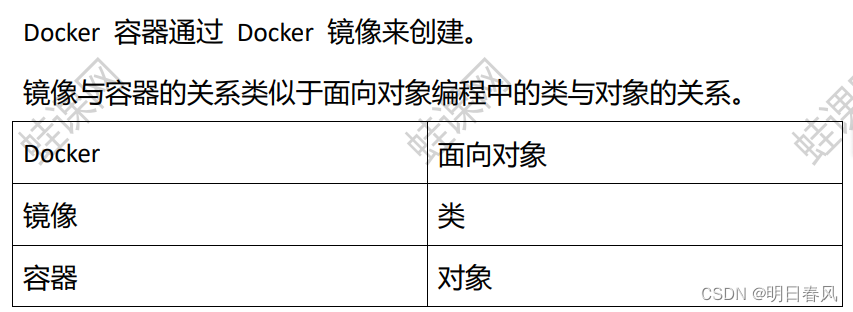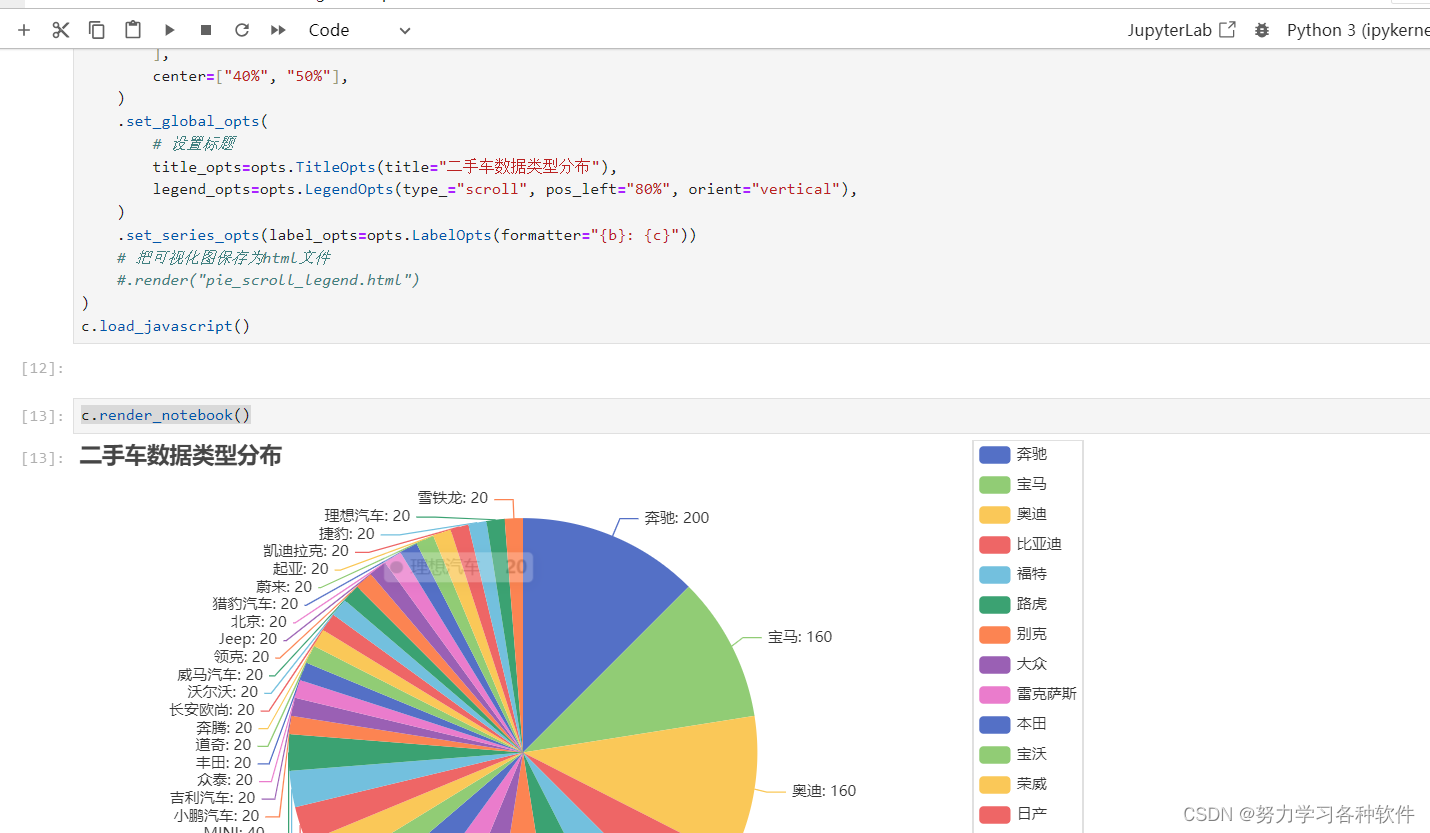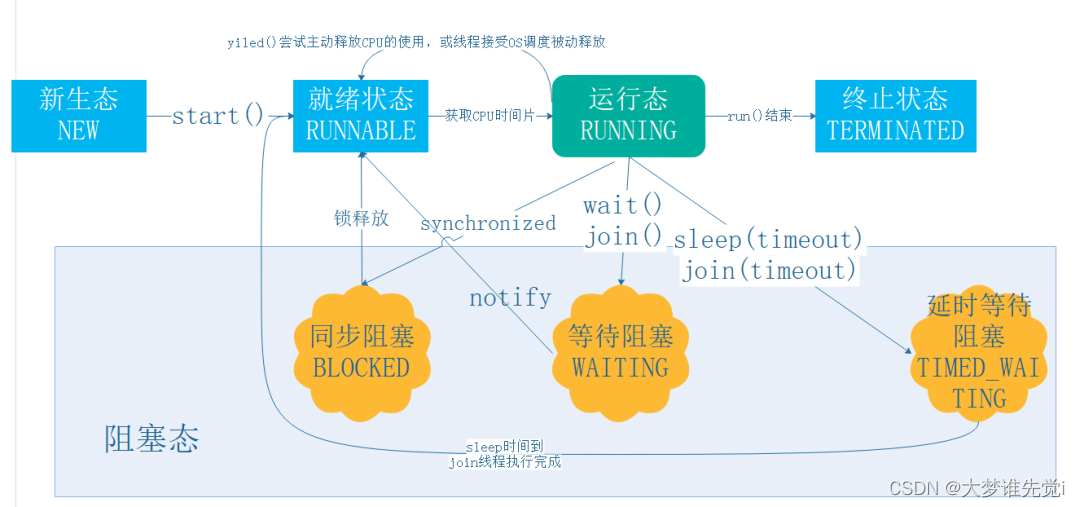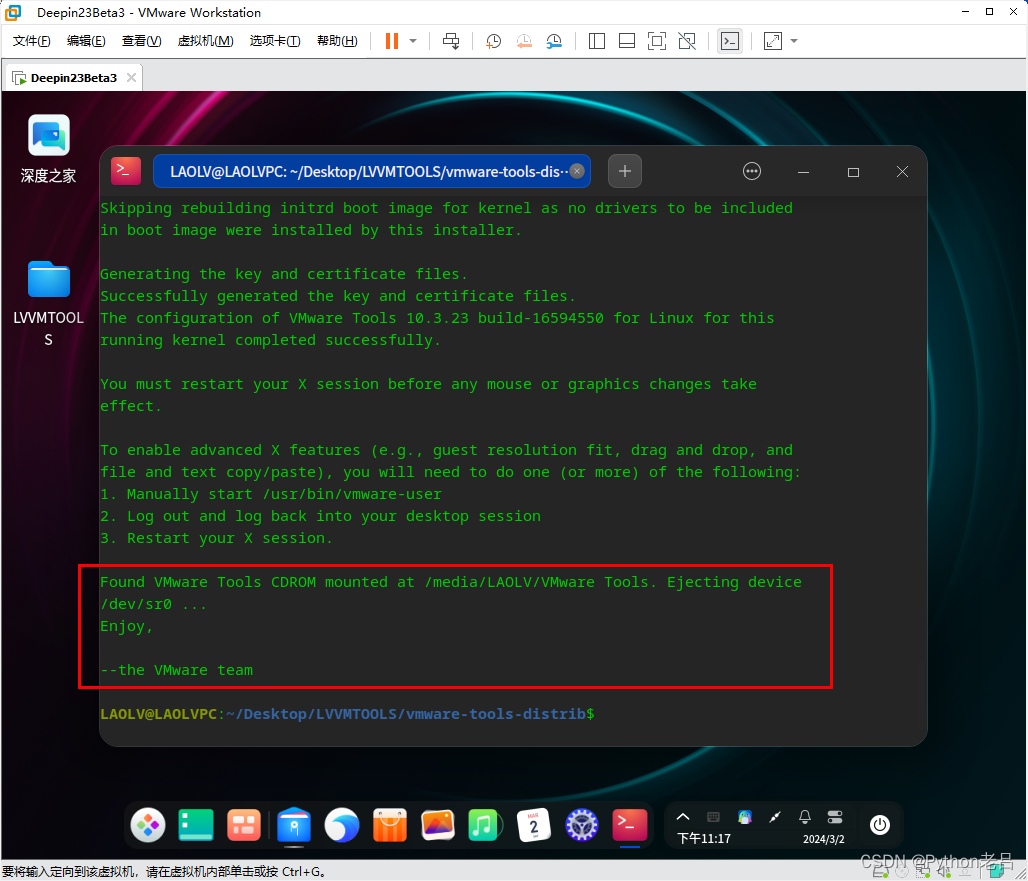目录
一.Nginx基础介绍
二.nginx安装配置
三.Nginx配置文件
3.1nginx主配置文件(/etc/nginx/nginx.conf)
3.2默认的网站配置文件(/etc/nginx/conf.d/default.conf)
四.创建新的虚拟主机
五.Nginx日志
5.1nginx日志格式
5.2查看日志
5.3日志缓存(了解)
5.4日志轮转(/etc/logrotate.d/nginx)
六.Nginx WEB模块
6.1连接状态模块(stub_status_module)
6.2随机主页模块(random_index_module)
6.3替换模块(sub_moddule)
6.4文件读取模块(ngx_http_core_module)
6.5文件压缩模块
6.6页面缓存模块(ngx_http_headers_module)
6.7防盗链模块(ngx_http_referer_module)
七.Nginx访问限制模块
7.1ngx_http_limit_req_module(请求限制模块)
7.2ngx_http_limit_conn_module(连接限制模块)
八.Nginx访问控制模块
8.1基于IP实现(ngx_http_access_module)
8.2基于用户实现(ngx_http_auth_basic_module)
九.Nginx Proxy服务器
9.1代理
9.2Nginx Proxy服务器反向代理实验
9.3Nginx-proxy缓存(网页缓存)
一.Nginx基础介绍
简介:
Nginx是一个高性能的HTTP和反向代理服务器,也是一个邮局服务器,支持高并发,其高并发是通过IO多路复用中的epoll模型实现的。
二.nginx安装配置
通过yum安装
yum install nginx -y三.Nginx配置文件
/usr/share/nginx/htm/index.html Nginx默认的网站根目录
/etc/nginx/nginx.conf总配置文件
/etc/nginx/conf.d子配置文件夹
/etc/nginx/conf.d/default.conf默认的网站配置文件/etc/logrotate.d/nginx日志轮转
/etc/nginx/mime.types文件关联程序
/etc/nginx/modules模块文件夹
/usr/lib/systermd/system/nginx.service systemctl服务脚本。
/usr/sbin/nginx主程序
/var/cache/nginx缓存各种
var/og/nginx日志文件夹
/usr/ib64/nginx Nginx模块目录
3.1nginx主配置文件(/etc/nginx/nginx.conf)
user nginx; # 设置运行nginx的用户
worker_processes auto; # 设置工作进程数量为自动
error_log /var/log/nginx/error.log; # 错误日志文件路径
pid /run/nginx.pid; # 进程ID文件路径
events {
worker_connections 1024; # 每个工作进程的最大连接数
}
http {
log_format main '$remote_addr - $remote_user [$time_local] "$request" '
'$status $body_bytes_sent "$http_referer" '
'"$http_user_agent" "$http_x_forwarded_for"'; # 自定义日志格式
access_log /var/log/nginx/access.log main; # 访问日志文件路径及使用的日志格式
sendfile on; # 开启sendfile系统调用传输文件
tcp_nopush on; # 开启tcp_nopush功能
tcp_nodelay on; # 开启tcp_nodelay功能
keepalive_timeout 65; # 客户端保持连接超时时间
types_hash_max_size 4096; # MIME类型哈希表最大值
include /etc/nginx/mime.types; # 包含MIME类型文件
default_type application/octet-stream; # 默认MIME类型
include /etc/nginx/conf.d/*.conf; # 包含指定目录下的所有.conf配置文件
server{
location / {
}
}
}
总结:整个nginx主配置文件分为3大模块,分别是全局配置模块,events模块,http模块,而http模块还可以包括server模块(虚拟主机配置部分)和location模块(配置请求的路由)。
3.2默认的网站配置文件(/etc/nginx/conf.d/default.conf)
server {
listen 80; # 监听端口80
server_name localhost; # 设置服务器名称为localhost
#charset koi8-r; # 设置字符编码为koi8-r
#access_log /var/log/nginx/host.access.log main; # 设置访问日志路径及日志格式
location / {
root /usr/share/nginx/html; # 设置根目录为/usr/share/nginx/html
index index.html index.htm; # 设置默认访问文件为index.html或index.htm
}
}
四.创建新的虚拟主机
setenforce 0 # 临时关闭SELinux
systemctl stop firewalld # 停止Firewalld防火墙
vim /etc/nginx/conf.d/yulang.conf # 使用vim编辑器打开Nginx配置文件yulang.conf
# Nginx配置文件内容
server {
listen 80; # 监听端口80
server_name www.yulang.com; # 设置服务器名称为www.yulang.com
location / {
root /yulang; # 设置根目录为/yulang
index index.html; # 设置默认访问文件为index.html
}
}
mkdir /yulang # 创建/yulang目录
echo yulang > /yulang/index.html # 在/yulang目录下创建index.html并写入内容"yulang"
systemctl restart nginx # 重启Nginx服务
vim /etc/hosts # 使用vim编辑器打开hosts文件
192.168.145.129 www.yulang.com # 将www.yulang.com映射到IP地址192.168.145.129
curl www.yulang.com # 使用curl命令访问www.yulang.com网站
这里还可以访问指定的文件:
curl www.yulang.com/index.html五.Nginx日志
5.1nginx日志格式
log_format main '$remote_addr - $remote_user [$time_local] "$request" '
'$status $body_bytes_sent "$http_referer" '
'"$http_user_agent" "$http_x_forwarded_for"';
$remote_addr远程地址:记录客户端IP地址
$remote_user远程用户:记录客户端用户名称
$time_local本地时间:服务器自身时间
$request请求:记录请求的URL和HTTP协议
$status状态: 记录请求状态
$body_bytes_sent发送给客户端的字节数,不包括响应头的大小
$http_referer记录从哪个页面链接访问过来的(超链接 )
$http_user_agent记录客户端浏览器相关信息
$http_ x_ forwarded_for代理IP
5.2查看日志
/var/log/nginx/access.log(正常日志):
[root@serverd ~]# tail /var/log/nginx/access.log
192.168.145.131 - - [28/Feb/2024:16:58:43 +0800] "GET / HTTP/1.1" 403 153 "-" "curl/7.76.1" "-"
192.168.145.131 - - [28/Feb/2024:16:58:54 +0800] "GET / HTTP/1.1" 200 7 "-" "curl/7.76.1" "-"
# 详细注释:
# 192.168.145.131: 请求的客户端IP地址
# - -: 在标准日志格式中,通常表示标识用户和认证用户的字段,但在这里未提供信息
# [28/Feb/2024:16:58:43 +0800]: 记录的时间戳,包括日期、时分秒和时区信息 (+0800 表示东八区)
# "GET / HTTP/1.1": HTTP请求方法(GET),请求的URI路径(/),HTTP协议版本(HTTP/1.1)
# 403: 服务器响应状态码,表示禁止访问(Forbidden)
# 153: 响应内容的字节数
# "-": 用户代理(User-Agent)字符串,指示发起请求的客户端应用程序(curl/7.76.1)
# "-": 另一个横杠,在标准日志格式中通常表示引用页面的来源,但在这里未提供信息
/var/log/nginx/error.log(错误日志):
[root@serverd ~]# tail /var/log/nginx/error.log
2024/02/29 09:32:51 [emerg] 6937#6937: "access_log" directive is not allowed here in /etc/nginx/nginx.conf:8
2024/02/29 09:33:10 [emerg] 6947#6947: "access_log" directive is not allowed here in /etc/nginx/nginx.conf:8
2024/02/29 09:43:22 [error] 6965#6965: *1 open() "/yulang/89.html" failed (2: No such file or directory), client: 192.168.145.131, server: www.yulang.com, request: "GET /89.html HTTP/1.1", host: "www.yulang.com"
5.3日志缓存(了解)
大量访问到来时,对于每一条日志记录,都将是先打开文件,再写入日志,然后关闭占用了系统的1O,与业务无关,可以使用open_log_file_cache来设定。
open_log_file_cache: max=1000 inactive=20s min_uses=3 vald=1m;
字段解析:
max 1000:日志文件的FD,最大的缓存数量为1000。
min_users3:20秒內小于 3次访问的FD,就给你清掉,结合inactive 20s的时间。
valid 1m:检查周期为1分钟。
总结:缓存最多1000个,到了极限每分钟开始清除掉20秒内小于3次的文件FD.
5.4日志轮转(/etc/logrotate.d/nginx)
[root@serverd ~]# vim /etc/logrotate.d/nginx
# 针对nginx日志文件的logrotate配置
# 匹配所有/var/log/nginx/目录下的以.log结尾的文件
/var/log/nginx/*log {
# 按日进行日志切割
daily
# 保留旧日志文件的数量,超过10个会被删除
rotate 10
# 如果日志文件丢失,也不报错
missingok
# 如果日志文件为空,也不报错
notifempty
# 压缩日志文件
compress
# 在压缩之前保留一个未压缩的副本
delaycompress
# 多个进程共享日志文件时,只在所有进程都完成后再执行postrotate
sharedscripts
# 日志切割后执行的命令
postrotate
# 向nginx主进程发送USR1信号,实现重新打开日志文件,使日志切割生效
/bin/kill -USR1 `cat /run/nginx.pid 2>/dev/null` 2>/dev/null || true
endscript
}
六.Nginx WEB模块
6.1连接状态模块(stub_status_module)
意义:展示了用户和nginx链接数量信息。
启动状态模块:
[root@serverd ~]# vi /etc/nginx/conf.d/default.conf
在server内添加如下:
# 下面是用于展示Nginx状态的接口配置
location /nginx_status {
stub_status; # 使用stub_status模块
allow all; # 允许所有IP访问
}
[root@serverd ~]# curl 192.168.145.131/nginx_status
Active connections: 1 # 当前活动连接数为1
server accepts handled requests
5 5 5 # 这三个数字分别代表总共接受的连接、处理的连接和请求的数量
Reading: 0 Writing: 1 Waiting: 0 # 当前状态下读取连接数为0,写入连接数为1,等待连接数为0
6.2随机主页模块(random_index_module)
意义:将主页设置成随机页面,是一种微调更新机制
启动随机主页:
[root@serverd app]# mkdir /app #创建一个名为app的目录
[root@serverd app]# touch /app/{bule.html,green.html,red.html,.yellow.html} #在app目录下创建四个文件:bule.html, green.html, red.html, .yellow.html
[root@serverd app]# vim red.html
# 编辑red.html文件,添加HTML代码
<html>
<head>
<title>red color</title>
</head>
<body style="background-color:red">
<h1>red color!</h1>
</body>
</html>
其余几个文件一样添加,只需修改颜色部分
[root@serverd app]# vim /etc/nginx/conf.d/default.conf 编辑default.conf文件
[root@serverd app]# systemctl restart nginx # 重启nginx 服务
#访问
[root@serverd app]# curl 192.168.145.132
还可以在浏览器中测试,会显示出随机访问的结果。
第一次访问:

第二次访问:

其余情况不做展示,还会显示出green页面的情况。
6.3替换模块(sub_moddule)
意义:网页内容替换
[root@serverd app]# vim /etc/nginx/conf.d/default.conf
#将以下内容添加到server下面
server {
# 使用 sub_filter 将响应内容中的 'nginx' 替换为 'yulang'
sub_filter nginx 'yulang';
# 设置 sub_filter_once 为 off,允许多次替换
sub_filter_once off;
}
[root@serverd app]# systemctl restart nginx #重启服务
[root@serverd app]# curl 192.168.145.132 #访问
访问成功图:
成功将nginx替换成了yulang

6.4文件读取模块(ngx_http_core_module)
主要包含了sendfile() tcp_nopush() tcp_nodelay()这三个模块
sendfile:

sendfile:用于发送文件的模块,sendfile系统调用则提供了一种减少拷贝次数,提升文件传输性能的方法,DMA引擎会将数据直接从内核缓冲区拷贝到协议引擎中,从而避免了数据在内核缓冲区和用户缓冲区之间的拷贝,操作效率很高,被称之为零拷贝。该模块默认开启,形式为sendfile on。
tcp_nopush:
tcp_nopush():网络资源在发送时,除了资源本身会占据空间外,包头也会占据一定的空间,这样当大量资源发送时,会对减缓传输速率,以及浪费一定的网络资源,所以我们开启tcp_nopush()来提升网络传输的效率,当包积累到一定数量时再发送。该模块默认关闭,形式为tcp_nopush on,需手动在主配置文件中打开。
tcp_nodelay:
tcp_nodelay():当网络延迟比较长时,tcp_nodelay()会立刻将数据包发送出去,从而避免网络延迟,存在较长的网络延迟时,才会被启用,形式为tcp_nodelay on。
6.5文件压缩模块
文件传输前进行压缩能够提升文件的传输效率
开启关闭状态:
语法:gzip on|off;
默认:gzip off;压缩等级:
语法:gzip_comp_level level;
默认: gzip_comp_ level 1;(1~9)压缩协议版本:
语法: gzip_http_version1.0| 1.1;
默认:gzip_http_version 1.1;
6.6页面缓存模块(ngx_http_headers_module)
意义:expires起到控制页面缓存的作用,合理的配置expires可以减少很多服务器的请求要配置expires,可以在http段中或者server段中或者location段中加入。Nginx(expires缓存减轻服务端压力),开启缓存可以加速浏览网站。
语法:

开启服务器缓存模块:
[root@serverd app]# vim /etc/nginx/conf.d/default.conf
location/ {
root /usr/share/nginx/html
index index.html index.htm;
#开启服务器缓存模块
expires 24h;
}6.7防盗链模块(ngx_http_referer_module)
搭建一个a.com网站
[root@serverd a.com]# vim /etc/nginx/conf.d/a.conf # 这是 a.com 网站的 Nginx 配置文件 a.conf
server {
listen 80; # 监听端口 80,接受来自客户端的HTTP请求
server_name a.com; # 指定服务器名称为 a.com,在客户端请求中匹配此域名
location / {
root /a.com; # 指定根目录为 /a.com,即网站文件的根目录
index index.html; # 指定默认显示的文件为 index.html
}
}
[root@serverd a.com]# mkdir /a.com #创建a.com目录
[root@serverd a.com]# vim /a.com/index.html #创建index.html
<img src="1.jpg" />
[root@serverd a.com]# cd /a.com #上传图片:1.jpg
[root@serverd a.com]# ll
总用量 36
-rw-r--r--. 1 root root 29978 3月 1 14:27 1.jpg
-rw-r--r--. 1 root root 20 3月 1 14:45 index.html
[root@serverd a.com]# vim /etc/hosts #域名映射
192.168.145.132 a.com b.com
[root@serverd a.com]# systemctl restart nginx #重启服务
虚拟机中的firefox访问:

搭建一个b.com网站(在主页中盗链a网站中的图片)
[root@serverd b.com]# vim /etc/nginx/conf.d/b.conf # 这是 b.com 网站的 Nginx 配置文件 b.conf
server {
listen 80; # 监听端口 80,接受来自客户端的HTTP请求
server_name b.com; # 指定服务器名称为 b.com,在客户端请求中匹配此域名
location / {
root /b.com; # 指定根目录为 /b.com,即网站文件的根目录
index index.html; # 指定默认显示的文件为 index.html
}
}
[root@serverd b.com]# mkdir /b.com #创建b.com目录
[root@serverd b.com]# vim /b.com/index.html #创建index.html
<img src="http://a.com/1.jpg" /> #此处的图片形式是连接,因此盗链了a网站中的图片
[root@serverd a.com]# vim /etc/hosts #域名映射
192.168.145.132 a.com b.com
[root@serverd a.com]# systemctl restart nginx #重启服务
虚拟机中的firefox访问:

启用a.com防盗链功能:
[root@serverd ~]# vim /etc/nginx/conf.d/a.conf
location / {
valid_referers none blocked *.a.com; #不可以引用指定的任何区域
# 检查 Referer 是否有效,如果无效则返回 403 错误
if($invalid_referer){
return 403;
}
}
再次访问b网站,发现图片被防盗链了,访问不了:

如果需要某些网站能够使用盗链资源,需要在配置文件中添加白名单:
[root@serverd ~]# vim /etc/nginx/conf.d/a.conf
location / {
# 匹配以.goole.结尾的域名、以.baidu.结尾的域名、b.com、192.168.145.* 和 a.com
valid_referers none blocked *.a.com server_name ~\.goole\. ~\.baidu\. b.com 192.168.145.* a.com
if($invalid_referer){
return 403;
}
}
再次访问发现能够访问到了

七.Nginx访问限制模块
7.1ngx_http_limit_req_module(请求限制模块)
启动请求频率限制:
0测试未限制的情况下访问
[root@serverd ~]# yum install httpd-tools -y #安装httpd-tools工具
[root@serverd ~]# ab -n 100 -c 10 http://a.com
# 使用ab命令对网站进行压力测试
# -n 表示请求数,这里设置为100
# -c 表示并发数,这里设置为10
# http://a.com 是要测试的网站地址
1启动限制
[root@serverd ~]# vim /etc/nginx/nginx.conf
http{ #限制请求速率的配置,使用客户端IP地址作为限制的key,创建名为req_zone的内存区域,大小为10MB,
设置请求速率为每秒1个请求
limit_req_zone $binary_remote_addr zone=req_zone:10m rate=1r/s;
}
[root@serverd ~]# vim /etc/nginx/conf.d/a.conf
location / {
limit_req zone=req_zone; # 引用名为req_zone的内存区域进行请求限制
}
[root@serverd ~]# systemctl restart nginx
[root@serverd ~]# ab -n 100 -c 10 http://a.com再次访问时发现,请求的100次,失败了99次:

7.2ngx_http_limit_conn_module(连接限制模块)
意义:通过IP地址限制TCP的连接
八.Nginx访问控制模块
8.1基于IP实现(ngx_http_access_module)
1限制指定的主机访问
[root@serverd ~]# vim /etc/nginx/conf.d/a.conf
server{
allow 192.168.145.129;
deny all;
}
[root@serverd ~]# systemctl restart nginx
[root@serverd ~]# curl http://a.com/ #当前服务器对应的IP为192.168.145.132
<html>
<head><title>403 Forbidden</title></head>
<body>
<center><h1>403 Forbidden</h1></center>
<hr><center>nginx/1.20.1</center>
</body>
</html>
#结果我们通过192.168.145.132访问不了
#开启对192.168.145.132的访问
[root@serverd ~]# vim /etc/nginx/conf.d/a.conf
server{
allow 192.168.145.132;
deny all;
}
[root@serverd ~]# systemctl restart nginx
#此时成功访问
[root@serverd ~]# curl http://a.com/
<img src="1.jpg" />
8.2基于用户实现(ngx_http_auth_basic_module)
1建立认证文件
[root@serverd ~]# htpasswd -cm /etc/nginx/conf.d/passwd user1 #在 /etc/nginx/conf.d/下创建一个加密的文件 -c创建文件 -m对文件加密
[root@serverd ~]# htpasswd -m /etc/nginx/conf.d/passwd user2 #再次添加要认证的用户时,不需要加-c参数
2启动认证
[root@serverd ~]# vim /etc/nginx/conf.d/a.conf
server{
auth_basic "nginx access test!"; #认证提示信息
auth_basic_user_file /etc/nginx/conf.d/passwd; #引用创建的加密文件
}
3重启验证
[root@serverd ~]# systemctl restart nginx
浏览器测试:

登陆后成功访问到了页面:

九.Nginx Proxy服务器
9.1代理
正向代理:在客户端部署代理服务器,代替客户端对外部网络发送和接收消息。客户端发送一个指定目标的请求给代理服务器,代理服务器再发送给目标服务器,目标服务器收到请求后,将响应的内容发送给代理服务器,代理服务器发给客户端。
反向代理:在服务器端部署代理服务器(为了区分,将真正响应的服务器成为业务服务器),让代理服务器替业务服务器接收请求或发送响应。客户端发送一个请求给代理服务器,代理服务器接收请求并将请求发送给业务服务器,业务服务器将响应发送给代理服务器,代理服务器再将响应发送给客户端。
正向代理和反向代理的不同点
1、部署的位置不同
正向代理部署在客户端,反向代理部署在服务器端。
2、作用不同
正向代理是客户端的代理,帮助客户端突破访问控制;反向代理是服务器的代理,帮助服务器实现负载均衡,安全防护。
9.2Nginx Proxy服务器反向代理实验
详细见链接:http://t.csdnimg.cn/MTQDc
9.3Nginx-proxy缓存(网页缓存)
作用:是将业务服务器中的部分内容存储到代理服务器,客户端发送请求到 Nginx 代理服务器,Nginx 检查缓存中是否有对应的响应内容,如果缓存中存在有效的响应,则直接返回给客户端,不用向后端服务器请求。
Nginx-proxy缓存指令:
1.proxy_cache_path: 配置缓存路径和相关参数
proxy_cache_path /path/to/cache levels=1:2 keys_zone=my_cache:10m max_size=10g inactive=60m;
/path/to/cache: 缓存文件存放路径levels=1:2: 指定目录结构的级别keys_zone=my_cache:10m: 定义名为my_cache的缓存区域,分配的内存大小为 10MBmax_size=10g: 设置最大缓存大小为 10GBinactive=60m: 指定缓存文件在闲置指定时间后会被删除
2.proxy_cache: 启用特定的缓存区域
proxy_cache my_cache;
3.proxy_cache_valid: 设置不同状态码的响应的缓存有效时间
proxy_cache_valid 200 302 10m;
proxy_cache_valid 404 1m;
- 对状态码为 200 和 302 的响应设置缓存有效时间为 10分钟
- 对状态码为 404 的响应设置缓存有效时间为 1分钟
4.proxy_cache_use_stale: 定义在更新缓存时是否允许使用过期的缓存内容
proxy_cache_use_stale error timeout updating http_500 http_502 http_503 http_504;
- 当请求过程中出现错误、超时或者后端返回特定状态码时,允许使用过期的缓存内容



